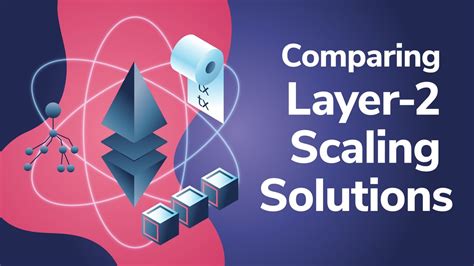The act of balancing the scaling of layer 2 of the cryptocurrency: take up the challenges of high gas costs and risk

The landscape of cryptocurrencies has evolved considerably in recent years, with the rise in layer 2 scaling solutions aimed at reducing high gas costs associated with the traditional Ethereum network. However, this pressure for more effective and more effective transactions has not gone unnoticed, as it also has several challenges that must be met.
What are layer 2 scale solutions?
The layer 2 scaling solutions allow users to create applications above layer 1 (Mainchain) blockchain networks like Ethereum, without the high costs associated with hand. These solutions use outside chain transactions and more advanced consensus mechanisms to reduce gas costs. Some of the most popular layer 2 scaling solutions include optimism, polygon and solana.
Gas costs: the main challenge
One of the main concerns of the layer of layer 2 is the extremely high costs associated with traditional Ethereum transactions. According to Etherscan data, average transaction costs on Ethereum have increased by more than 500% in just a few years. It makes it difficult for users to access blockchain networks without breaking the bank.
Risk management: a critical consideration
High gas fees also have significant implications for risk management in cryptocurrency space. When transactions are treated quickly and at a lower cost, this increases the probability that exploits be executed by malicious actors. This can lead to a decrease in trust and trust in the market, which makes it more difficult for new projects to gain ground.
Solutions of layer of layer 2: attenuation of high gas costs
Although layer 2 scale solutions offer significant advantages, they also have several challenges that must be met:
* Evolution : layer 2 scaling requires a large number of nodes to effectively treat transactions. This can cause increased latency and higher costs.
* Safety : With more complex consensus mechanisms, it comes the risk of security vulnerabilities.
* Interoperability : The layer 2 scaling solutions often require integration with Mainchain networks, which can be difficult.
Risk management in scaling 2
layer
To alleviate high gas costs and minimize risks, cryptocurrency developers can use several strategies:
- Diversify transactions : The rupture of transactions into smaller components can reduce the overall cost of treatment.
- Use the out -of -chain mechanisms : Lever of solutions outside the chain such as layer 3 scaling or decentralized financing protocols (DEFI) to reduce chain costs.
- Make robust security measures : regularly update software and use secure communication protocols to minimize the risk of vulnerabilities.
Conclusion
The layer 2 scaling is a crucial step to fill the gap between traditional blockchain networks and more effective applications. Although high gas fees are an inherent challenge associated with this technology, they also have significant opportunities for innovation and growth. By understanding the complexities of layer 2 layout solutions and implementing robust risk management strategies, developers can unlock new possibilities while minimizing risks.
While the cryptocurrency landscape continues to evolve, it is essential to meet these challenges head-on. The future of blockchain lies in its ability to evolve effectively, to secure effectively and to alleviate high gas costs associated with traditional transactions.
